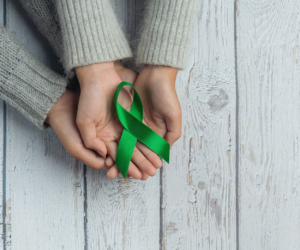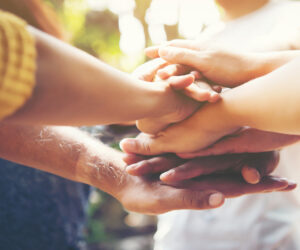Vea este video en español.
Stress and anxiety reactions following disaster and tragedy can be challenging. But did you know there are typical psychological phases of disaster?
First, there is the impact phase, it’s characterized by increased anxiety and fears.
Followed by the heroic phase – when survivors help one another to deal with the disaster or tragedy.
Then, the honeymoon phase – this is when you see the community coming together to support each other.
The disillusionment phase usually comes next, with increased frustration with the disaster recovery process. This is where we see stress and fatigue take a toll.
Lastly, is the reconstruction phase, where there are thoughts and plans for reconstruction and there is acceptance of the need to assume responsibility for moving forward.
Remember…progress isn’t always a straight line. You may move back and forth in the phases and that’s ok. Healing is possible.
#MOShowMeHope #ShowMeHope #ShowMeHopeMissouri #MissouriShowMeHope #DisasterService #CCP #PhasesofDisaster
Las reacciones de estrés y ansiedad después de un desastre o tragedia pueden ser desafiantes. ¿Pero sabías que hay fases psicológicas típicas de desastre? Primero, está la fase de impacto, caracterizada por una mayor ansiedad y temores. Seguido de la fase heroica: cuando los sobrevivientes se ayudan mutuamente a lidiar con el desastre o la tragedia. Luego, la fase de luna de miel: cuando ves que la comunidad se une para apoyarse mutuamente. La fase de desilusión suele venir a continuación, con una mayor frustración hacia el proceso de recuperación. Aquí es donde vemos que el estrés y la fatiga afectan. Por último, está la fase de reconstrucción, donde hay pensamientos y planes para la reconstrucción y existe la aceptación de la necesidad de asumir la responsabilidad de avanzar. Recuerda… el progreso no siempre es una línea recta. Puede moverse de un lado a otro entre las fases y eso está bien. La curación es posible.

 This ‘Mental Health Monday’ segment focused on Happier U, a digital resource center for college-age students. Jessica Duren joined “Show Me Today” to talk about the partnership between the Missouri Department of Mental Health and the Missouri Department of Higher Education and Workforce Development.
This ‘Mental Health Monday’ segment focused on Happier U, a digital resource center for college-age students. Jessica Duren joined “Show Me Today” to talk about the partnership between the Missouri Department of Mental Health and the Missouri Department of Higher Education and Workforce Development. This ‘Mental Health Monday’ segment focused on services available in Southeast Missouri. Bootheel Counseling Services joined “Show Me Today” to talk about ways that they can spread hope around Southeast Missouri.
This ‘Mental Health Monday’ segment focused on services available in Southeast Missouri. Bootheel Counseling Services joined “Show Me Today” to talk about ways that they can spread hope around Southeast Missouri. This ‘Mental Health Monday’ segment focused on community involvement. Sarah Johnson, disaster mental health manager for Show Me Health at Clark Community Mental Health Center, joined “Show Me Today” to talk about the resources provided to their local communities.
This ‘Mental Health Monday’ segment focused on community involvement. Sarah Johnson, disaster mental health manager for Show Me Health at Clark Community Mental Health Center, joined “Show Me Today” to talk about the resources provided to their local communities. This ‘Mental Health Monday’ segment focused on men’s mental health. Beckie Gierer, Director of the Office of Disaster Services at the Department of Mental Health, joined “Show Me Today” to talk about sports and mental health resources.
This ‘Mental Health Monday’ segment focused on men’s mental health. Beckie Gierer, Director of the Office of Disaster Services at the Department of Mental Health, joined “Show Me Today” to talk about sports and mental health resources. This ‘Mental Health Monday segment focused on efforts in schools with Show Me Hope. Angie Blumenthal joined “Show Me Today” to talk about affirmation boards, coloring books, and other initiatives in the education setting.
This ‘Mental Health Monday segment focused on efforts in schools with Show Me Hope. Angie Blumenthal joined “Show Me Today” to talk about affirmation boards, coloring books, and other initiatives in the education setting. This ‘Mental Health Monday’ segment focused on efforts made to support young Missourians. Kylie Linberger joined “Show Me Today” to talk about the recent Bracelet Kits with Kids Initiative.
This ‘Mental Health Monday’ segment focused on efforts made to support young Missourians. Kylie Linberger joined “Show Me Today” to talk about the recent Bracelet Kits with Kids Initiative. In this ‘Mental Health Monday’ segment, Rachel Jones from the Department of Mental Health joined “Show Me Today” to explain the continuum of mental health and dimensions of wellness.
In this ‘Mental Health Monday’ segment, Rachel Jones from the Department of Mental Health joined “Show Me Today” to explain the continuum of mental health and dimensions of wellness.